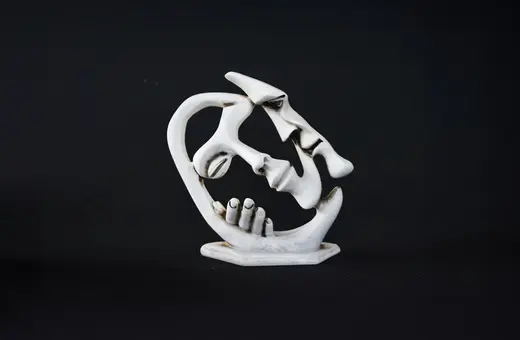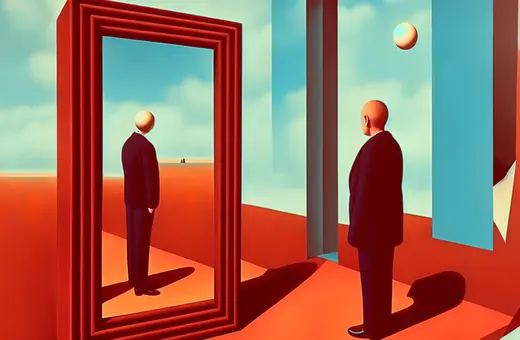This article was inspired by a recent piece on IAI News entitled The Mysterious Disappearance of Consciousness, in which philosopher Bernardo Kastrup analysed the work of leading illusionists and eliminativists, including Michael Graziano. What follows is Graziano's response to Kastrup's argument.
The scientific work that I do on the brain basis of consciousness is sometimes misunderstood - a misunderstanding which I think comes mainly from the political divide between mystics and materialists. I am a materialist, and reactions to my work tend to follow along the lines of: ‘keep your scientific hands off my consciousness mystery’.
This kind of argument often devolves into distortions and phrases examined out of context – in short, the wooly thinking of philosophy that’s lost its integrity. Among the most common and puzzling reaction I get goes something like this: ‘Graziano says that consciousness does not exist; that we lack an inner dialogue; that getting stuck by a pin, or walking into a wall, is ethereal’. None of these statements are true, of course, but I do often hear them coming from the nonscientific, or often pseudoscientific, political side.
As an attempt to get across the reality of what I work on, I’ll start with a simple example: suppose you’re looking at something obvious, like a chair. There it is, in front of you. The truth is that the chair you think is there is not exactly the same as the chair that is actually there – a strange thought for most people, but a very familiar one to neuroscientists.
The brain builds models of things in the world around you and models of its own internal events, and in every case the models are simplifications.
We can break this situation down into four steps. Information about the chair enters your visual system; your brain builds a simplified, ‘quick-and-dirty’ version (a simulation or model as it’s sometimes called); your cognition has access to that model; as a result, you can talk about the chair.
The brain builds models of things in the world around you and models of its own internal events, and in every case, probably without exception, the models are simplifications; they are not perfectly detailed or accurate.
Let’s follow this logic. You claim to have a conscious experience. You make that claim because you think it’s true – your higher cognition has hold of that information. You think it’s true because it resonates with your deeper, intuitive models constructed beneath the level of higher cognition. What you intuit, think, and claim, are based on information constructed in the brain.
I would say with certainty – that whatever consciousness you actually have, it is different from the consciousness that you think you have.
There is no wiggle-room about it. It must be true. But that information is almost certainly not perfectly accurate. Therefore, we know – I would say with certainty – that whatever consciousness you actually have, it is different from the consciousness that you think you have. That’s a thought and a half. People always have a hard time wrapping their minds around it.
Some of the attributes of consciousness that you claim to have, you probably don’t have. Some of the attributes of consciousness that you actually have, you probably don’t know that you have. One of the main stumbling blocks for naïve theories of consciousness, especially the mystical theories, is that they tend to take intuition as literally accurate. They fail to grasp the necessary gap between reality and what we intuit and think.















Join the conversation